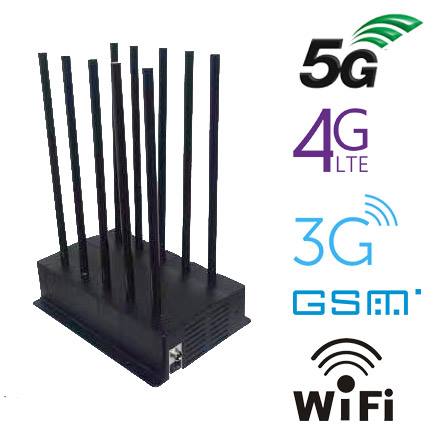What is the difference between a 5G signal jammer and a wifi signal jammer?
There are some key differences between 5G signal jammers and WiFi signal jammers, including the following:
Frequency band: 5G signal jammer is mainly used to shield or interfere with the signal transmission of 5G network, while Wi-Fi signal jammer is specially designed to shield or interfere with Wi-Fi signal. 5G signals typically transmit in the Sub-6 GHz and mmWave frequency bands, while Wi-Fi signals typically transmit in the 2.4 GHz and 5 GHz bands. Therefore, the operating frequency bands of these two jammers are different.

Protocols and technologies: 5G signals and Wi-Fi signals use different protocols and technologies. The 5G signal uses the 5G mobile communication protocol, while the Wi-Fi signal uses the IEEE 802.11 wireless LAN protocol. These two protocols have different transmission methods, encoding and modulation techniques, so different jammers are needed to interfere with or block them.
Application scenarios: 5G signal jammers are usually used for specific scenarios or needs, such as privacy protection, security requirements or electromagnetic interference control. Wi-Fi signal jammers are usually used in places where Wi-Fi signal transmission needs to be limited or blocked, such as conference rooms, libraries, or other scenarios where wireless network access needs to be controlled.
It should be noted that the use of 5G signal jammer or Wi-Fi signal jammer needs to comply with local laws and regulations. In some areas, blocking or interfering with wireless communications signals may be illegal because it may interfere with normal communications services and emergency communications. Before considering purchasing or using these devices, be sure to understand and comply with the relevant laws.













